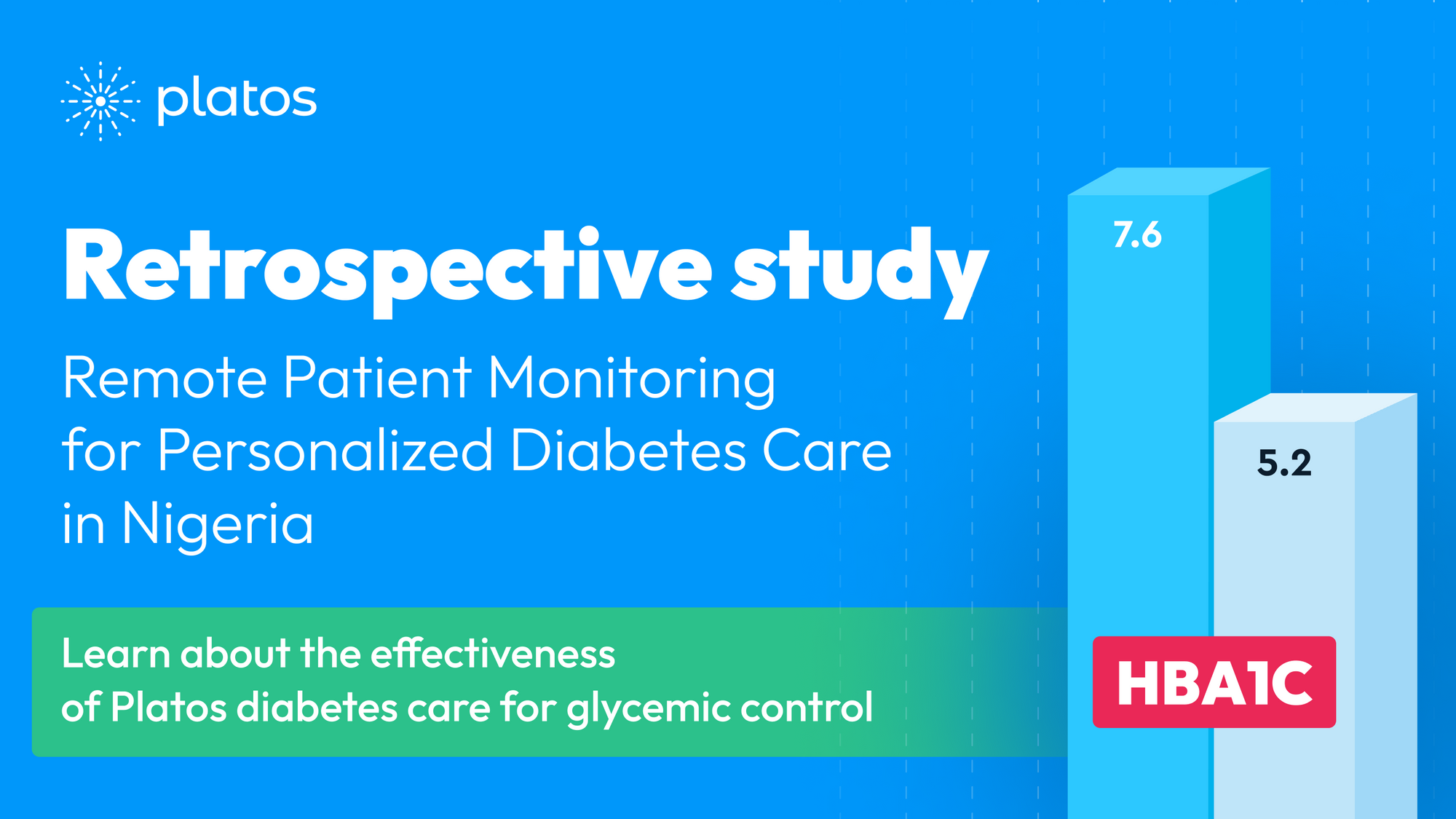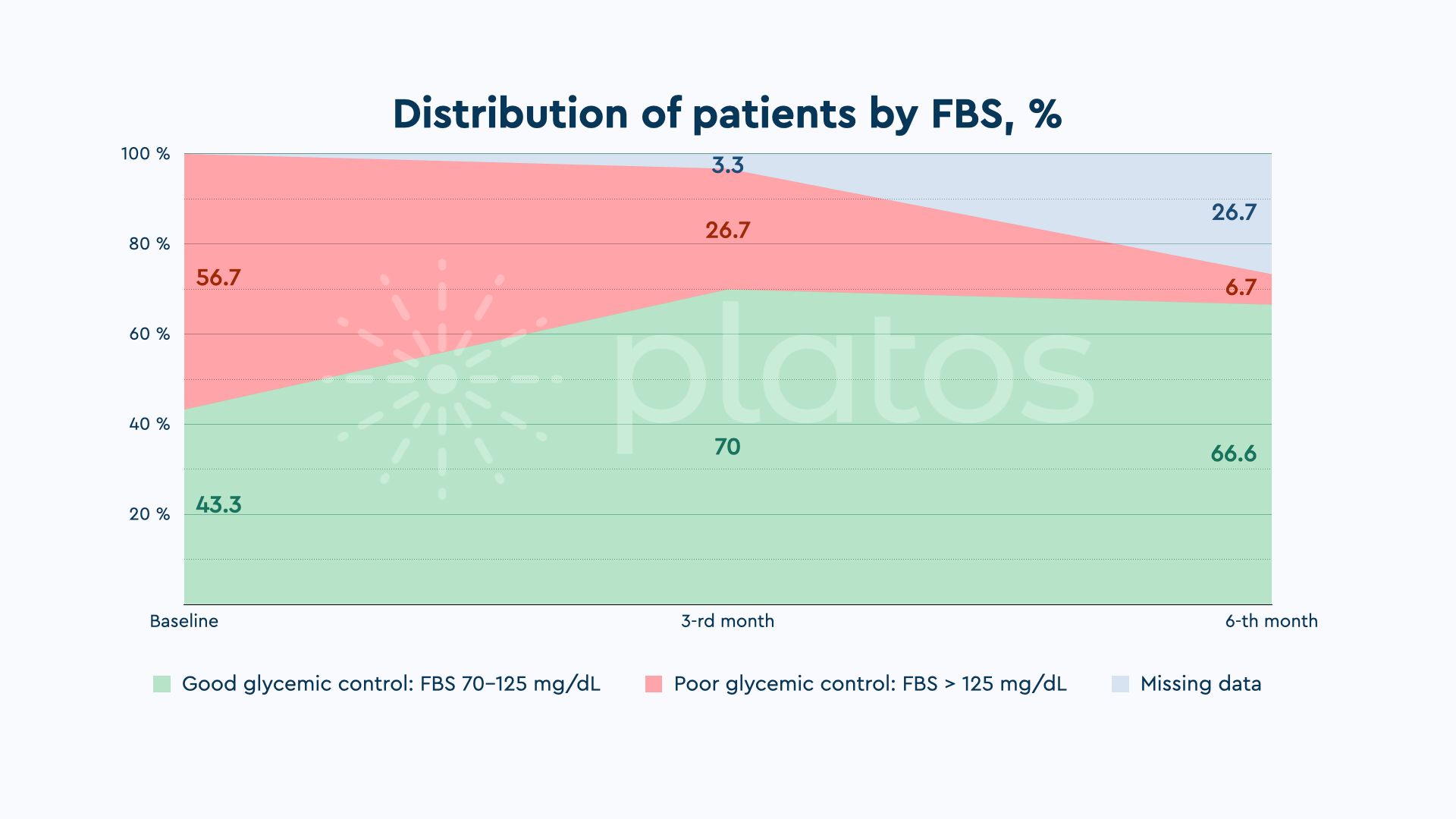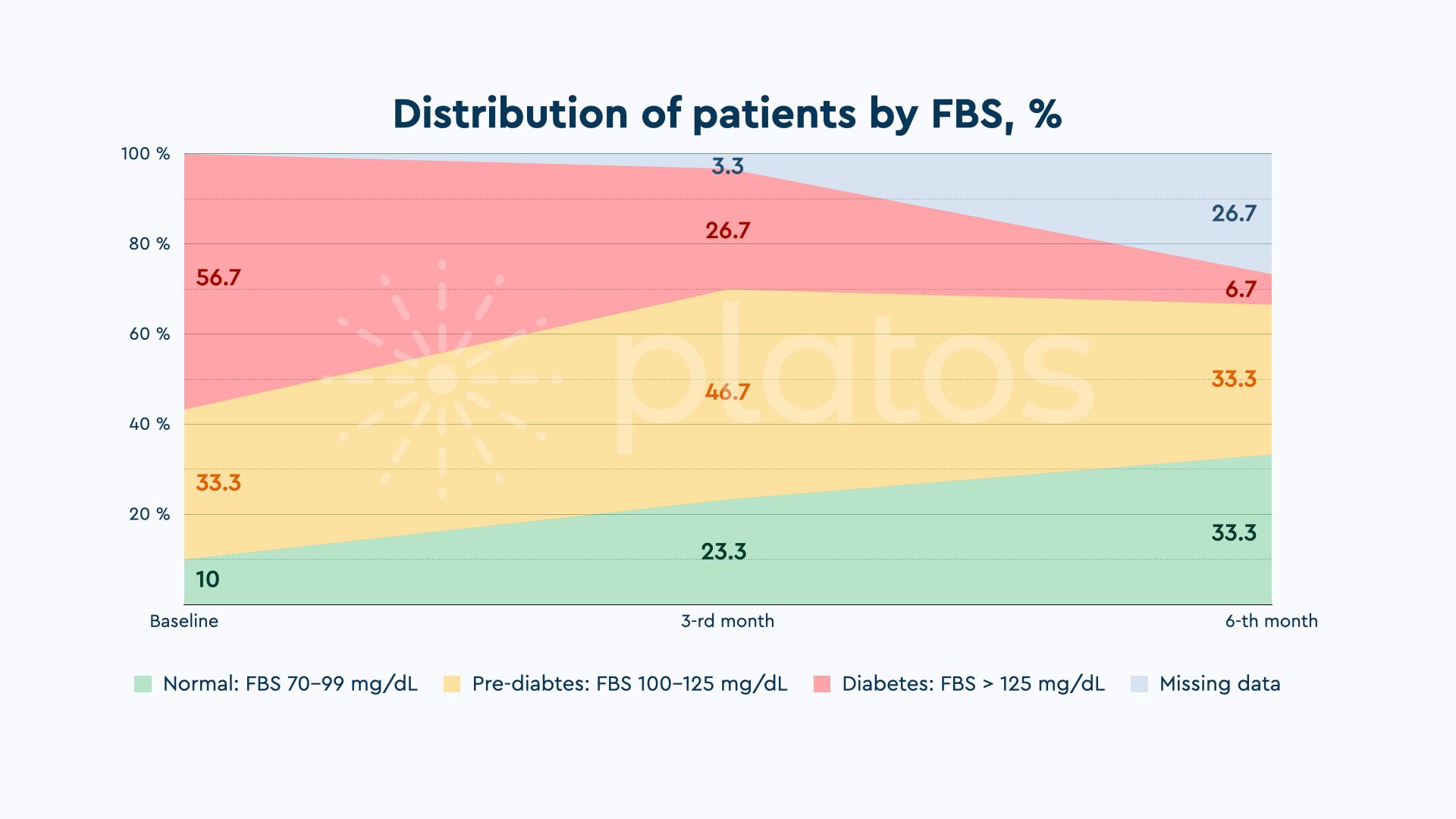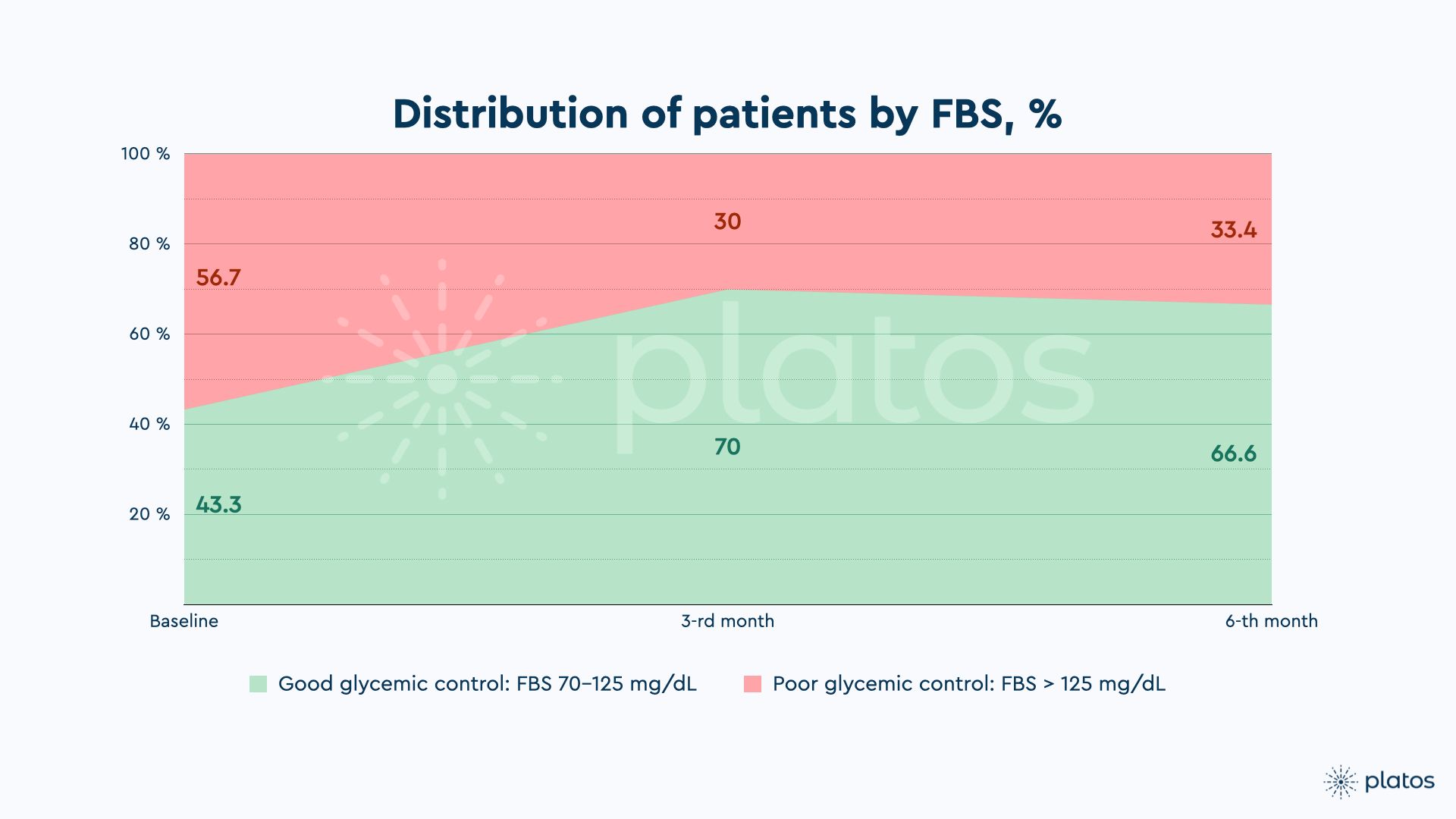Remote Patient Monitoring for Personalized Diabetes Care in Nigeria

A summary of key findings from our retrospective study on the effectiveness of Platos diabetes care pathway for glycemic control.
Study led by Dr Itopa Jimoh, MBBS, MPH, DrPH
Background
Diabetes is a chronic disease that affects millions of people worldwide, and its prevalence continues to increase at an alarming rate.
There were 3.6 million cases of diabetes in Nigeria in 2021 and only about 25% were estimated to be diagnosed and receiving treatment (1).
Maintaining good glycemic control is crucial to delaying or avoiding the complications of type 2 diabetes mellitus (T2DM), however, less than 5.4% of the estimated 3.6 million people living with diabetes in Nigeria achieved the recommended glycemic target of HbA1c below 7% in 2021 (1).
Aim
This study aims to assess the effectiveness of Platos diabetes care in controlling blood sugar levels among T2DM patients in Nigeria.
Methods
In this study, we retrospectively reviewed and analyzed the electronic medical records and patient-reported outcomes data obtained from the Platos remote monitoring service for T2DM between January 2020 and December 2022.
Results
At the end of the third and sixth months of treatment, the proportion of patients with good glycemic control improved from 43.3% at the baseline to 70% in 3 months and 66.6% after 6 months at Platos.
This is a good result when compared to what is achieved in regular in-person clinics in Nigeria. In a multi-centric study in Nigeria, only 20.4% achieved good control.
In another study at a family medical clinic in southwest Nigeria, the proportion of people with good glycemic control ranged from 54.2% to 65.6% after at least 6 months of treatment.

At the end of the third and sixth months of treatment, those with normal blood sugar improved from 10% to 23.3% and 33.3%, respectively.
Those within the prediabetes range initially increased from 33.3% to 46.7% after 3 months and then dropped to 33.3% after 6 months
This is a positive development showing that those with poor glycemic control transitioned to normal FBS through the prediabetes state, and
The trend could be expected to continue to improve as the proportion of patients with poor glycemic control reduced from 56.7%, at the baseline, to 26.7% and 6.7% after 3 and 6 months of treatment respectively.

Even in a worst-case scenario, assuming all the patients with missing data had poor glycemic control, such that at the end of the 3rd and 6th months of treatment, 30% and 33.3% respectively had poor glycemic control (Figure 3), which would remain robust.
This represents a significant improvement on the baseline of 56.7% and better than that of a retrospective observational study conducted in 2020 at a family medical clinic in southwest Nigeria where the prevalence of poor glycemic control ranged from 34.4% to 45.8% among patients who were 40 years and above, in follow-up treatment for T2DM for at least 6 months (9).
These suggest that the T2DM patients seen remotely at Platos can achieve glycemic control which is better than those seen in a regular in-person diabetes clinic.

Conclusions:
- Overall, the study shows that the Platos diabetes care, delivered via the Platos Holistic Remote Patient Monitoring Platform, effectively controls blood sugar among patients living with T2DM in Nigeria.
- Telehealth/virtual care is an effective tool in the management of T2DM in Nigeria.
- The glycemic control obtained at Platos online platform is better than the result from an in-person tertiary diabetes care centre in southwest Nigeria and in another multi-centric study across Nigeria.